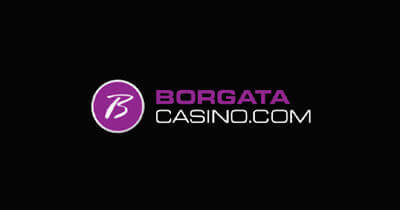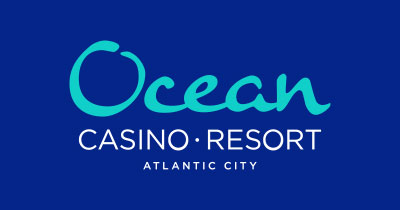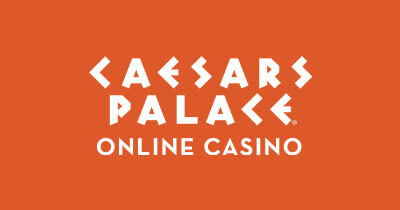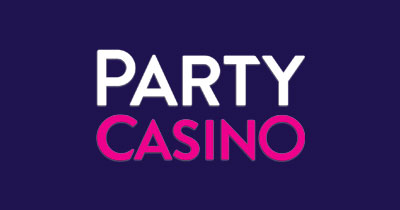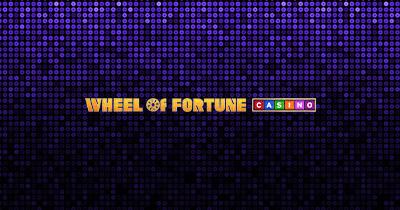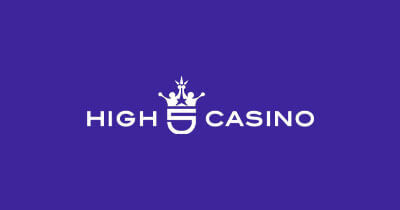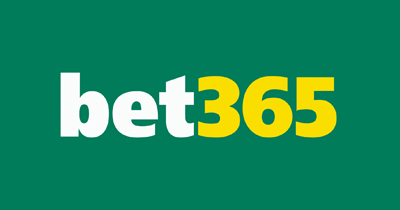by Steve Bourie Learn more about the author read more »
Who is Bob Dancer?
Bob Dancer is universally acclaimed as the best video poker writer and teacher in the country. “I’m a strong professional player,” says Dancer, “but there are others just as strong. My claim to fame is I’m the strongest player by far who is willing to share what I know. The other video poker writers are mostly not successful players.” Dancer’s most famous book is “Million Dollar Video Poker,” which recounts the first seven years of his video poker career, culminating in a six-month period where he and his wife Shirley netted more than $1,000,000.
Besides writing “Million Dollar Video Poker,” plus a steamy novel titled “Sex Lies and Video Poker,” Bob also writes about video poker for numerous gaming magazines and teaches weekly video poker classes at Silverton casino in Las Vegas, plus occasionally at other casinos across the country. He also markets a line of strategy cards and a series of Winner’s Guides for players wanting to improve their skills. Additionally, Bob and his business partner, Jeffrey Compton offer their marketing services to casinos through their company, Compton Dancer Consulting.
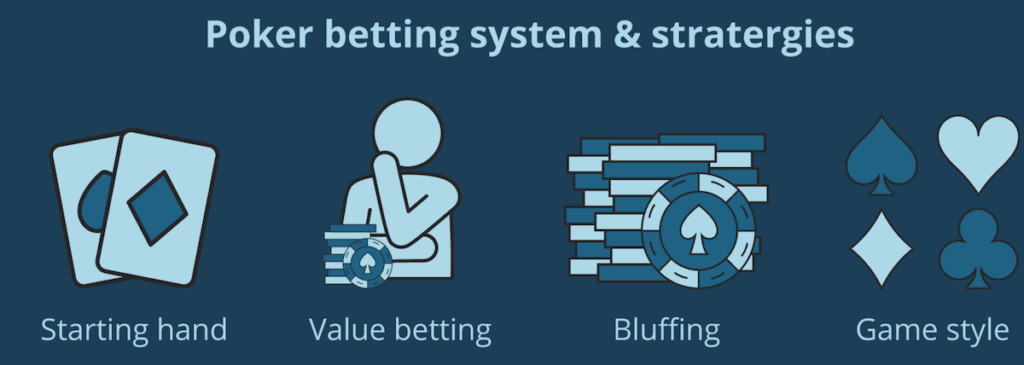
The Interview
In early 2005 I had a chance to interview Bob in Las Vegas to get some insight into how he became so successful and also to get his thoughts on how the average video poker player can learn to play a better game.
I arrived promptly at the offices of Compton Dancer Consulting for my scheduled 10 a.m. meeting with Bob, but he was running a little late. When he arrived a short time later he apologized and explained that he hadn’t forgotten about the appointment, it’s just that he was out playing video poker until 5 a.m. and he had overslept. Thus, began my first look into the life of a professional video poker player.
Many people have visions of professional gamblers leading a life of luxury and winning money at every turn. The truth is that it’s a very tough way to make a living. There are wild swings in a player’s bankroll and, in Bob’s particular case, his playing times are dictated by the hours which afford him the best opportunities for winning. Thus, if there’s a particular promotion which requires him to play at 5 a.m., then that’s when he’ll be hitting those machines. Fortunately, for Bob, he’s been very successful in his chosen profession, but he didn’t quite start out that way.
In 1973, at the age of 26 and employed as an economist for the Rand Corporation, Bob read a story about backgammon in Playboy magazine. Fascinated by the game, he read every book he could find on the subject and became a bit of an expert. He got laid off the following year and a friend invited him to the Cavendish West, a private card club in the Los Angeles area where backgammon was played for money. He began playing for money, but didn’t do well. “I knew a lot about backgammon,” he says, “but nothing about gambling.”
For the next six years, as his skills improved, he was able to eke out a living as a professional backgammon player. However, he sometimes had to dip into his savings and, based on his limited success, he concluded that perhaps he should get a “regular” job. In 1980 he went back to work as a computer programmer, which left him less time for backgammon than if he didn’t have to hold down a job. For the next nine years he continued to study the game and play for money, albeit less than before. At the same time he also learned to count cards in blackjack, periodically taking weekend trips to Las Vegas to practice his skills.
In 1989 Bob returned to the Cavendish on a steady basis and began to do well, earning enough to consider quitting his “regular” job, but deciding against it. Within two years, however, his employer had been bought out by another company and Bob was laid off. This gave him the incentive to pursue gambling on a full-time basis.
In 1991 Bob met Ginnie, an attractive Asian girl, 10 years his junior, on the dance floor. Bob is an accomplished dancer and actually chose his pen name, Bob Dancer, based on his fondness for dancing. The couple began dating on a steady basis and Bob began teaching her about blackjack. They spent many weekends in Las Vegas taking advantage of casino promotional programs designed for out-of-state players. These programs were prevalent at many casinos in the early 90’s and required a player to buy-in for a fixed amount (usually around $1,000) and they were then given extra chips (usually 10%), plus a free room and some credit for food. The chips were all nonnegotiable and couldn’t be cashed in, they had to be played, but if you played a break-even game of blackjack, it was fairly easy to come out ahead on average, although as in all gambling, some trips were positive and others were negative.
At the tables the couple acted as husband and wife, with Bob mentally counting cards, and then verbally coaching Ginnie on how to play her hands. They were very successful with these programs and in August 1993 Bob convinced Ginnie that they should move to Las Vegas to become “professional” gamblers.
Starting with a bankroll of only $6,000 Bob and Ginnie were basically limited to low-limit blackjack games with bets ranging from $5 to $25. While they had a slight advantage by counting cards, their biggest edge came from the special promotional programs which they were still able to take advantage of because they kept their California ID’s. Additionally, they became coupon “hustlers” by using numerous matchplay and bonus coupons that casinos handed out in their Fun Books. These coupons weren’t worth much, usually an extra $2 on a $5 bet, or a matching $5 chip on a $5 bet, but at this point in their gambling careers they needed every possible advantage. The coupons were limited to one per person, per day, but they found ways to get bunches of them and they spread their visits throughout the day to use them multiple times with different dealers.
During the course of time, however, it became more difficult for Bob and Ginnie to use their advantage-play methods. Many of the casinos discontinued their bonus chip programs and those that kept it barred the couple from playing because they felt they were “abusing” the program. It also became harder to use coupons because many casino employees were now familiar with their faces and wouldn’t let them use the coupons more than once.
“In the year-and-a-half that Ginnie and I played blackjack in Vegas we made about $12,000 from blackjack (including promotions directly related to blackjack) and $21,000 from coupons and other promotions,” says Bob. “It was a subsistence success and when the blackjack promotions disappeared we had to switch to quarter video poker.”
“Ginnie and I learned video poker together,” he says. “We started by reading Stanford Wong’s book, Professional Video Poker, and learning that strategy well. It was limited to 8/5 Jacks or Better progressives, but since we couldn’t find many of those machines with a high enough meter, we used the strategy for 9/6 Jacks, too. We figured it was close enough, but today I know that the games have big differences.”
Always looking for an edge, Bob determined that they should limit their play to the best-paying machines and only play at casinos offering a promotional bonus. At that time, the Sahara paid double for royal flushes on Thursdays during the first 10 minutes of any hour and on Sundays they paid double for four Aces. Therefore, the couple limited their playing time to those particular days.
Initially they were successful, but they hit a $1,200 losing streak which spooked Ginnie and she decided to give up her gambling “career.” She moved back to Los Angeles and Bob only saw her a few more times after that. “Interestingly,” Bob says, “her leaving led to a turnaround in my fortunes. Within two weeks I hit three Thursday-royals and broke even for the rest of the time, so my bankroll doubled.”
Now on his own, Bob began to study more often and seek out better opportunities. He continually scouted new promotions and modified his play to take advantage of the best opportunities. With his bankroll at $50,000 and growing, Bob moved up to $1 machines and sometimes brought in a financial partner to back his play on $5 machines.
In the summer of 1996 Bob met Shirley on the dance floor at Sam’s Town Casino. Shirley lived in California but often visited Las Vegas on business and within a few months the couple began dating on a steady basis.
Shirley was a gambling novice and this began her introduction into the world of professional video poker. Bob brought her to many casino invitational events where the couple enjoyed lavish parties, gourmet meals and extended stays in some of the city’s finest hotel suites. As they grew closer, Bob finally asked Shirley to marry him and in late 1997 they tied the knot.
Initially reluctant to play video poker, Shirley slowly learned the basics and eventually became an excellent player, helping Bob to extract even more from the casinos. By 1999 Bob’s bankroll had easily surpassed $200,000 and $5 games were a major source of his income.
On Thanksgiving weekend that year Bob received an invitation from the MGM Grand to join their player’s club and earn double points for his play during a one-month period. After doing some calculations, he decided it was a positive play and tried to convince Shirley that he should attempt to get as many points as quickly as possible by playing $25 9/6 machines.
Reluctant to move up to bigger stakes, and the resulting large bankroll fluctuations which it brought, Shirley wasn’t in favor of it. Eventually, however, Bob convinced her that things would be fine and they began playing in late November. Within two weeks they were down $40,000 and Shirley’s worst fears were coming to pass. Fortunately, two days later Bob hit a royal flush for $100,000 and suddenly they were up $60,000!
At this point Shirley was ready to take the money and run, but Bob believed it was still worth while to pursue a game where they had an advantage. Besides, he pointed out, they were accumulating player’s club points redeemable for cash and gifts, plus frequent flyer miles for trips on American plus fabulous free gourmet meals, plus their play also earned them some free nights in the MGM’s private “Mansion” villas which, if it open to the public, would rent for about $3,000 per night. Bob’s logic won out and they continued to play.
At the end of the one-month period they were still up $60,000, but along the way Bob learned that their play had earned them premium status which allowed them to earn player’s points at a faster rate. This, Bob concluded, still made it a profitable venture and they continued to play. Six months later, they were up an additional $20,000, but then something interesting happened. Bob discovered that some machines were awarding points at nearly twice the normal rate and he began to play these machines exclusively, never saying anything to management about the error.
Bob was able to play these machines for several months before management corrected the mistake, but bad luck caused him to lose. Between February and September he lost more than $100,000 and was feeling discouraged, but accepting of what was happening. “Video poker swings can be long and large, and I was experiencing one firsthand,” he says. “Despite only playing machines where I had the advantage, I was still losing a distressingly-large sum of money.”
Surprisingly, Bob found some more machines awarding points at the inflated rate and he restricted his play to those games until, within a few months, they were all fixed by management. By November, things had turned around and Bob was now up $70,000 for the year – a turnaround of $170,000. At this point he got a little bolder and decided to try his luck on a $100 9/6 machine, deciding to risk up to $40,000. It took him just three hours to lose the entire forty grand.
Returning to lower-limit $5 Five Play, $10 Triple Play and regular $25 games, the couple carried on and came out slightly ahead for the next two months, but in February the video poker Gods truly smiled down on them. During the early part of that month, they hit twelve $20,000 royals and six $40,000 royals. With such a comfortable cushion, Bob felt it was time to take another shot at the $100 machine and on February 12, 2001 he and Shirley set aside a $20,000 bankroll to finance the venture.
That evening, Bob played his $25 machine, while Shirley tried her luck on the $100 version under Bob’s watchful eyes. Within 15 minutes, Bob hit a royal for $100,000 and within the next half-hour Shirley hit a royal for $400,000. The half-a-million dollar payoff was certainly the highlight of Bob’s video poker career, but it also prompted the casino executives to take a closer look at his play and it marked the beginning of the end for Bob and Shirley’s welcome at the MGM Grand.
During the next month the Dancers continued to play, but were net losers. Still content to continue playing (Bob calculated the games were worth at least $300,000 per year in income), the end came rather abruptly on March 15 when he was called into the office of an MGM executive for a “discussion.” He was informed that many of his player’s club benefits were being reduced or eliminated, but he was still welcome to play. The reduced benefits left Bob with a slight advantage and he considered continuing to play, but that changed about one month later when the MGM announced a 25% increase in requirements to earn slot club points for all video poker players. This completely eliminated Bob’s advantage and he never played there again.
When it was all over, Bob and Shirley had won slightly more than one million dollars (including cashback from the player’s club), plus several cars, two computers, a home entertainment center and more than four million frequent flyer miles. Part of the reason for the couple’s success was that the casino was too generous with its player’s club benefits, plus it had mistakenly programmed some video poker machines to award player’s club points at a higher than normal rate. Since Bob was able to take advantage of these facts, did he feel badly about it?
“No. When I’m in a casino, I’m trying to bring home the bacon,” he says. “It’s not my job to tell the casino what machines to put on the floor, or what slot club system to run. The casino hires a lot of people to protect what it has and to concoct ways to get more. The casino sets out games on which it has the advantage and invites you to come in and try your luck. If you win, you get to keep the money. If you don’t, which is usually the case, you leave your money behind.”
After his big win, Bob went back to his old ways, playing lower-limit machines. “I still got invited to casino promotional events, but I did have to go and find games to play at the $5 level and sometimes at the $1 level,” he says.
The trend the past few years has been for many Las Vegas-area casinos to cut their cashback/comps on their better paying video poker machines, but Bob doesn’t see that being much of a problem for good players. “There are still plenty of games out there, but adjustments need to be made,” he says.
Bob Dancer’s favorite casinos
Dancer plays at a number of casinos, including in no particular order, both Fiestas, Palms, Golden Nugget, Ellis Island, Gold Coast, Orleans, Sam’s Town, among others. “In 2004 the Orleans and Gold Coast were probably two of my top four casinos for playing,” he says. His game of choice is Not So Ugly Deuces (NSUD): a Deuces Wild game which, when played perfectly, returns 99.73%. “But nobody plays it perfectly,” he adds. “There’s a whole bunch of penalty card situations and nobody has them all down pat.”
The two Coast casinos give double points on holidays, so that’s when you’ll find Bob playing there. “It’s a .30% cashback club and the double points make it a worthwhile play,” he says with a smile.
The Station Casinos, including Fiesta Casino, and many other casinos nowadays, don’t offer a cashback system where you can instantly get your cash. Instead they use a “bounceback” system whereby a check is sent to the player’s home and they must bring it back into the casino to redeem for cash. Bob estimates the checks are based on a player’s average play for the previous three months, with a top award of $700 at Station, but the exact formula is a secret and at some casinos can be partially based on theoretical loss, number of visits, how many comps are typically redeemed, and sometimes actual loss.
Bob gets a significant amount of mail from casinos announcing their promotional events and he says that analyzing how much a promotion is worth is very important. “If you’re from out of town and you’re not going to be around to collect your cash later, then a bounceback club isn’t worthwhile. You would want a club where you can get same day cashback. If you’re a local and you have some flexibility about when you can go in and pick up your cash, then a bounceback club is actually better.”
Bob goes on to point out that bounceback clubs tend to have a higher cashback rate than sameday cashback clubs. The reason is that virtually everyone in a sameday club makes sure to get their cash after finishing their play, while not everyone in a bounceback club makes the effort to go back for their cash. This allows the bounceback clubs to offer a higher rate because they know they won’t have to give cash back to every player.
When asked what is the single most important thing the average video poker player should learn, Bob gives a surprisingly candid answer. “The average person is not going to be successful at video poker,” he says. “Video poker is applied mathematics and the average person with a casual interest in the game won’t get a long-term advantage over the casino because he isn’t willing to study hard enough to get an edge.”
For those willing to study and learn, however, Bob offers hope. “You have to learn one game at a time,” he says. “You cannot become proficient at Jacks or Better, Deuces Wild and Double Bonus, simultaneously.”
And which game is the best to play?
According to Bob, “It depends on where you’re going to be playing. If you go on the Internet to Yahoo’s discussion group VP Free (http://members.cox.net/vpfree/), it lists the best video poker games at most casinos in the country. No matter where you live, you can find the most lucrative game available in the casinos near you. Whatever it is, that’s the game you want to learn.”
For help in learning the proper strategies, Bob suggests using several aids.
“A few authors put out strategy cards which are good,” he says. “But, if somebody wants to master a particular video poker game, the Winner’s Guides series, written by me and Liam Daily, a Ph. D. economist from Oxford University, are by far the best material available. There’s really no competition. A few other authors write a few pages on each game, but the Winner’s Guides, which have more than 100 pages are much more comprehensive. A computer trainer is also essential because they correct you when you’re wrong. Win Poker is the one I sell, but there are others (Frugal Video Poker, Optimal Video Poker, Masque) on the market. The edge that’s available to a player is so small that unless you play really close to perfect, you have no chance. Only a computer trainer can teach you to play perfectly.”
Once a player knows the proper strategy, what’s next? “Actually, learning the game is the easy part,” says Bob. “Once that’s mastered, players need to learn the slot club inside and out. Talk to other players to find out what promotions are in place. Every casino has its own idiosyncrasies that aren’t written down anywhere, but you can find out about them by networking with other players. Video poker players make more off promotions than they do off the games. That was true in the past and it’s still true today. The best players learn how to calculate when they have the edge by analyzing how much the game pays, how much the slot club pays and how much the promotions are worth.”
Although Bob makes it sound easy, he does warn players that “video poker, played well, is a grind-it-out game” and players must have a sufficient bankroll in order to finance their play. “If one royal flush is going to make a big difference in your bankroll then you’re playing for stakes that are way too high. Royal flushes come every 40,000 hands on average. There are times when it will be a couple hundred thousand hands between royals and there are times when it will be two or three in the same day.”
Bob also points out that since video poker players have continually become better , the casinos have reacted with countermeasures. “When you have a competition and over time it becomes one-sided, then the competition will end,” he says. “So if one side gets better, the other side has to make adjustments. The players today are much better than they were five years ago and if the casinos offered the same game as they did before then the casinos would be losing far more than they’re comfortable with. To adjust for that, the casinos offer tougher pay schedules, fewer slot club benefits and sometimes they will even refuse players the right to play.”
“A lot of players get annoyed by this. They have studied to the point that they’ve finally gotten good at the game and then the casino changes things. There are many players who believe that they have the right to get better and that the casino should stay a sitting duck by not changing. Well, the guy running the casino doesn’t see it that way. So if you’re going to play in this game you have to be willing to get better or be left behind.”
And what does the future hold for the players who do get better? Will they continue to make money? Or, will the casinos make it impossible for that to happen? “It will always be a cat and mouse game,” says Bob. “There are lots of casinos out there with great deals for players willing to search for them. Right now players in Atlantic City say there’s nothing worthwhile to play, but yes there is. Players in Atlantic City can make over $50,000 a year, but it requires networking, it requires scouting and it requires learning the strategies for different games. The best players will always be able to make money. There will always be at least 50 players who can make $50,000 or more a year playing video poker somewhere.”


